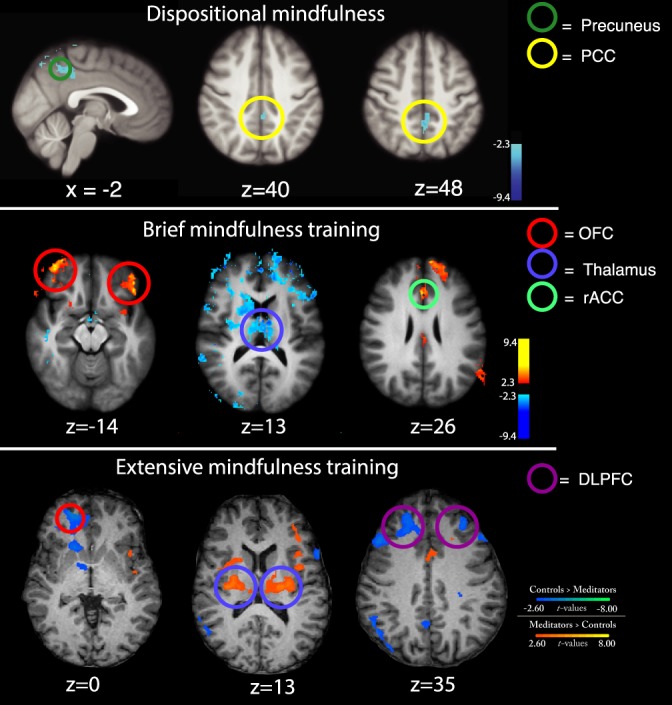Figure 1.

First row (dispositional mindfulness): Greater deactivation of the posterior cingulate cortex (PCC)/precuneus was associated with higher trait mindfulness (Freiburg Mindfulness Inventory) and lower pain during noxious heat stimulation.142 Second row (brief mindfulness training): Higher mindfulness meditation-induced activation of the bilateral orbitofrontal cortex (OFC), rostral anterior cingulate cortex (rACC), and greater thalamic deactivation was associated with greater pain relief during noxious heat.141 Third row (extensive mindfulness training): When compared with age-matched controls, adept Zen meditators exhibited significant decoupling in low-level pain-related brain activation (thalamus) and brain regions that process appraisals and affect (medial OFC [mOFC] and dorsolateral PFC [DLPFC]) during noxious heat stimulation.45
